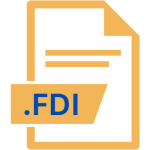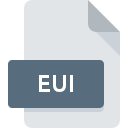.DMS File Extension

Amiga Disk Masher Image
| Developer | Commodore International |
| Popularity | |
| Category | Disk Image Files |
| Format | .DMS |
| Cross Platform | Update Soon |
What is an DMS file?
The .DMS file extension, known as the Amiga Disk Masher Image, holds historical significance within the realm of personal computing, particularly in connection with the Amiga computer series developed by Commodore.
This file format was widely utilized during the late 1980s and 1990s, serving as a compressed disk image format that allowed users to store and transfer entire Amiga disks in a single file.
Its compact nature and efficiency made it a popular choice among Amiga enthusiasts for distributing software, games, and utilities.
More Information.
The .DMS file format was created by a software tool known as “Disk Masher,” developed by a group called The Software Failure.
The tool was released in the late 1980s, during the golden age of the Amiga computer. Disk Masher allowed users to create compressed images of their Amiga disks, which were particularly useful for archiving or distributing software.
The compression algorithm used by Disk Masher was designed to minimize the size of the disk image without losing any data, making it an ideal format for transferring software over the relatively slow and expensive internet connections of the time.
Initially, the .DMS format was embraced by the Amiga community for its convenience and efficiency. It enabled users to share software and games in a compact form, reducing the need for physical disks and making distribution more accessible.
As the Amiga platform began to decline in popularity in the late 1990s, the use of the .DMS format also waned. Despite this, the format remains an important part of Amiga history, with many enthusiasts and collectors still using it to preserve and share vintage software.
Origin Of This File.
The .DMS file format was developed as a solution to a common problem faced by Amiga users during the height of the platform’s popularity: the need to efficiently distribute disk images.
With the rise of the internet and bulletin board systems (BBS), there was an increasing demand for a format that could compress and encapsulate the contents of Amiga disks, making them easier to share.
The .DMS format was introduced to meet this need, providing a way to create compressed disk images that could be transmitted over dial-up connections, stored on floppy disks, or even exchanged via email.
File Structure Technical Specification.
The .DMS file is essentially a compressed disk image that encapsulates the entire contents of an Amiga floppy disk.
The file structure is designed to mimic the layout of the original disk, including all files, directories, and even the boot sector.
This allows the .DMS file to be used as a complete replica of the original disk, which can be restored or accessed using appropriate software.
Technically, a .DMS file contains several key components:
- Header: The file begins with a header that contains metadata about the disk image, including the size of the original disk, the compression method used, and the version of the Disk Masher tool that created the file.
- Data Blocks: Following the header, the .DMS file contains a series of data blocks that represent the compressed contents of the disk. Each block corresponds to a specific sector or track on the original disk and is compressed using an algorithm optimized for Amiga disk data.
- Footer: The file ends with a footer that includes additional metadata and checksums, which can be used to verify the integrity of the disk image.
The .DMS format supports several different compression methods, allowing users to choose between faster compression or smaller file sizes. This flexibility made it a versatile tool for different use cases, from archiving large collections of software to sharing individual games or applications.
How to Convert the File?
Converting a .DMS file to another format can be challenging due to its specificity to the Amiga platform.
There are a few methods available for users who need to convert .DMS files to other disk image formats, such as ADF (Amiga Disk File) or ISO (for CD-ROM images).
- Amiga Emulators: Many Amiga emulators, such as WinUAE or FS-UAE, support the .DMS format and can be used to convert .DMS files to ADF format. Users can load the .DMS file into the emulator and then use the software to create an ADF image of the disk.
- Dedicated Tools: There are several software tools available that can convert .DMS files to other formats. One such tool is “DMS2ADF,” which is a command-line utility that converts .DMS files to ADF format. Another option is “ADFlib,” a library that supports reading and writing ADF files and can be used to convert .DMS files programmatically.
- Online Conversion Services: Some online services offer conversion of .DMS files to other formats. These services are typically easy to use but may have limitations in terms of file size and format support.
Advantages And Disadvantages.
Advantages:
- Efficient Compression: The .DMS format provided significant compression, reducing the size of disk images and making them easier to store and transfer. This was especially important during the era of slow internet connections and limited storage capacity.
- Integrity Preservation: The format preserved the exact structure of the original disk, including all files, directories, and boot sectors. This made it possible to recreate an identical copy of the original disk when the .DMS file was decompressed.
- Compatibility: The .DMS format was widely supported by various Amiga emulators and software tools, making it a standard choice for distributing Amiga disk images.
- Versatility: The ability to choose between different compression methods allowed users to balance between compression speed and file size, catering to different needs.
Disadvantages:
- Limited to Amiga Disks: The .DMS format was specifically designed for Amiga disks, limiting its usefulness outside the Amiga ecosystem. It is not suitable for other types of disk images or platforms.
- Obsolescence: As the Amiga platform declined in popularity, the use of the .DMS format also decreased. Today, it is primarily used by enthusiasts and collectors, making it a niche format with limited modern-day applications.
- Data Loss Risk: While the .DMS format was generally reliable, there was always a risk of data loss during the compression process, especially if the disk being imaged was damaged or corrupted.
How to Open DMS?
Open In Windows
- WinUAE: WinUAE is a popular Amiga emulator for Windows that supports the .DMS format. Users can load .DMS files directly into the emulator and run the software as if it were on an actual Amiga computer.
- DMS2ADF: For users who want to convert .DMS files to ADF format, DMS2ADF is a command-line tool that can be used on Windows. Once converted, the ADF file can be opened with any Amiga emulator.
Open In Linux
- E-UAE: E-UAE is an Amiga emulator available for Linux that supports the .DMS format. It can be used to load and run .DMS files.
- ADF Tools: Linux users can also use ADF Tools to convert .DMS files to ADF format, which can then be opened with an Amiga emulator or other compatible software.
Open In MAC
- FS-UAE: FS-UAE is an Amiga emulator for macOS that supports .DMS files. Users can load the files into the emulator to access the disk image.
- Unarchiver: The Unarchiver is a file extraction tool for macOS that supports a wide range of formats, including .DMS. It can be used to extract the contents of a .DMS file for further use.













